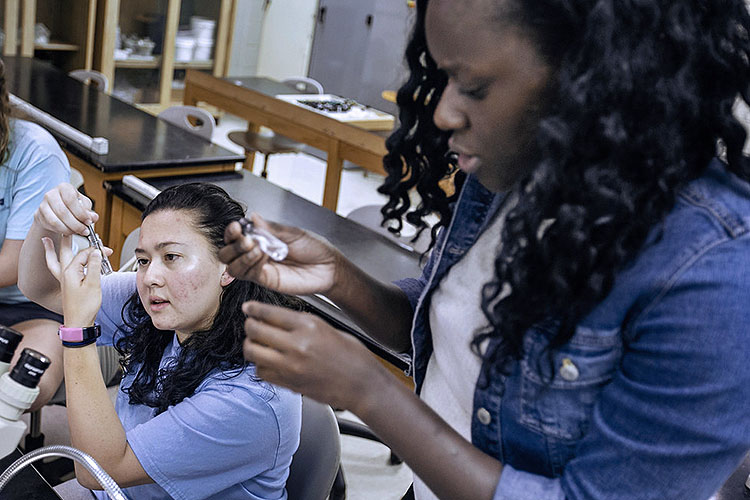New funding lifts L.A. schools, but disadvantaged students still lag

High schools in Los Angeles that have received new funding under California’s ambitious 2013 education reform achieved positive results, with clear improvement in student achievement and teacher working conditions. But after five years and $5 billion in fresh funding, educators failed to narrow wide racial disparities in learning, according to a new study by researchers at the University of California, Berkeley.
The Los Angeles Unified School District received just over $1 billion annually in new funding from the state, and over the subsequent five years, annual per-pupil spending climbed from $8,657 to $11,231, adjusted for inflation. Researchers tracked gains on several outcomes tied to the new funding, from class size and teacher quality to students’ academic performance.
“Most heartening, kids’ learning on average improved measurably in high schools,” said study co-author Bruce Fuller, a Berkeley professor and education policy expert. “But somewhat greater progress was made by students from better-off homes or schools in middle-class areas. The new funding appeared to bring far less benefit to the most disadvantaged groups.”
The share of eleventh-grade pupils meeting or exceeding the state’s proficiency bar climbed from 44% in 2015 to 50% in 2018. The percentage clearing this bar in mathematics rose from 17% to 20% during the same period. But, the researchers found, learning disparities between African Americans and English-learners, compared with white and Asian students, failed to budge.
The full report — “Does Progressive Finance Alter School Organizations and Raise Achievement?” — appears in the latest issue of the peer-reviewed journal Educational Policy.
Under then-Gov. Jerry Brown, California overhauled its school funding policy starting in 2013 and injected billions of new dollars into the Los Angeles education system. The new policy increased overall annual spending by $28 billion statewide, with the funding aimed at students with the greatest needs.
In January this year, Gov. Gavin Newsom urged local school boards to detail which schools and children benefit from this new funding.
Improved working conditions, but a thinner curriculum?
Schools benefiting most from funding gains were able to modestly lower average class size, from 25 to 23 students in English-language arts at campuses serving smaller shares of disadvantaged students.
For teachers in central-city high schools, average class loads were reduced by half a class per week during the initial years of the finance reform. These modest shifts were greater in high schools receiving larger per-pupil funding gains since 2013, mostly campuses serving larger shares of disadvantaged pupils.
Meanwhile, as the federal No Child Left Behind program was phased out and accountability pressures eased, schools diversified their course offerings — but often the classes were not college preparatory in character. The average count of course titles grew most, from 73 to 79 classes, in high schools serving fewer disadvantaged children.
“This resulted in a declining share of courses deemed eligible for college admission,” said Joon-Ho Lee, a UC Berkeley PhD student and co-author of the study. “This runs counter to the Los Angeles school district’s decade-long effort to propel more graduates into college.”
Achievement gains, but worsening disparities
The researchers discovered that schools in the least affluent areas used the funds to hire additional teachers. But they tended to recruit young teachers with little experience, and these instructors were often assigned to classes with a large proportion of English learners who typically need more educational support.
These staffing assignments tended to preserve or widen achievement disparities among racial groups, English learners and children from poor families. The percentage of low-income students achieving at proficient levels in math climbed slightly over five years, from 21% to 25%, when attending largely middle-class schools. But proficiency among their middle-class peers at the same high schools rose from 27% to 37% during the same period.
Similarly, the share of fluent English speakers clearing the state’s proficiency bar in reading climbed from 54% to 60% between 2013 and 2018 in high schools serving more middle-class students. But the percentage of English learners deemed proficient in reading, already low, fell from 5% to 2%, even when attending the identical schools as middle-class peers.
“Despite Sacramento’s best intentions, this surge in school funding failed to budge such wide inequities in which kids benefit most from L.A. schools,” Fuller said. “Going forward, the state might ensure that funding gains reach intended students, and that principals become mindful of how fresh resources are distributed within their schools.”
This study was funded by the California Community Foundation, California Endowment, Stuart Foundation and United Way of Greater Los Angeles.
